Meet Isabella Calidonna, Personal Trainer, Art Historian and Founder of ArcheoRunning
Issue #61
One of Rome’s best private guides, Isabella Calidonna offers something truly unique: early morning running tours that let you get some exercise, learn about Rome’s monuments and hidden gems, and see the city without the crowds. Originally from a small town in Calabria, Isabella studied art history in Siena, then moved to Rome ten years ago. While preparing for the exam to become a licensed tour guide, she also became a certified personal trainer with FIDAL (Federazione Italiana di Atletica Leggera). In 2019, she launched ArcheoRunning, the company through which she offers private running and walking tours of Rome.
When Isabella won a competition organized by the Lazio tourism board in 2021, I was invited to participate in one of her tours, but it took me until this year to finally meet her. In March, I joined her for her new walking tour of Michelangelo’s masterpieces. The two-hour tour gave me a whole new perspective on places that I’ve walked past a thousand times and turned out to be a great chance to get to know this smart, kind, compassionate woman.
Though she’s mainly known for running tours, she also does walking tours for those who can’t or (like me!) don’t like to run. And this year, she launched AR Experiences, the arm of her company that offers guided tours of popular sites like the Colosseum. I recently caught up with her and am thrilled to tell her story as part of my series of interviews with creatives and entrepreneurs in Italy.
Art history and personal training are two very diverse interests. Where did these two passions come from?
I’ve studied art history since I was a kid. Even in middle school, when there were art history lessons, I read everything and explained it to my classmates. I went to liceo artistico [a type of Italian high school focused on the arts and humanities] and then I continued with art history. With regard to sports, I was always sporty since I was a kid. I did gymnastics and dance, but I never contemplated it as a discipline.
When I moved to Rome, I began to run in order to release some tension and I fell in love with running. I decided to become a certified personal trainer because I wanted to create a 100% professional project with ArcheoRunning. I have always gravitated to sports since I was young, so it was easy for me to get certified in the span of a few years.
I also worked as a personal trainer for FIDAL for three years, but in the end there’s a point in one's life when one has to decide what to do and so I decided to concentrate on this particular job. I put my job as a personal trainer to the side, but it helps me in my work with ArcheoRunning. I have to say, they’re two things that are far from each other, but they’ve always been a part of me since I was little. With this project, I united them.
How did you create the different tours? Are they always three hours long?
It depends. The running tours are an hour or an hour and a half. Then there are the ones that are new for 2024. There’s the possibility to choose just the running tour, with various itineraries. Then for 2024, I also added a guided tour of the Colosseum, etc.
ArcheoRunning was born in 2019, but the idea arrived in 2016. I spent three years studying, identifying my target, and understanding what types of itineraries to offer. It wasn’t an immediate thing. There’s a lot of research behind it to understand what people would or wouldn’t like.
For each itinerary, I test and see if it’s doable or not. It’s a long process. Since many people asked me for a running tour and then a guided tour, I decided to offer that in addition. The Colosseum created early morning openings. Honestly, this summer it was better because it opened at 7:30. Now they eliminated that kind of service and there’s the attic, but with the entry to the Colosseum starting at 8:30. So I decided we’ll start with a running tour and then enter the Colosseum.
For the classic running tours, how does it work? You go to the client’s hotel, pick them up, run for ten minutes or so, then stop and explain?
Exactly, it depends on the client, but the client often asks me to pick them up at the hotel. The client chooses one of the itineraries outlined on the website or they ask me to create an itinerary ad hoc, which happened the other day with a guy from Munich who asked me for a bit of a longer itinerary with specific monuments.
It’s not a race. Anyone can do it. It’s light jogging. Along the route there are many stops, because maybe the client needs to rest and catch their breath, but also to take photos and let me continue to explain. Since it’s light jogging, I can talk while we go, because it’s not a high intensity run. So we talk about the sites we see along the route. At Piazza di Spagna, we stop and take photos because the beauty is that there’s no one, so of course the client wants to take photos in the empty piazza, when an hour later there will be crowds. The same thing at the Trevi Fountain and other places.
Are the tours always very early?
Yes because if you want to enjoy the city while it’s empty, you have to leave early. In the winter, the starting time depends on what time the sun rises, so from 7 to 7:30. In the summer, especially July and August, when it’s very hot, we start at 6 or 6:30.
We start early in order to enjoy the city when it’s cooler and when it’s empty. If we start later, it’s a problem because there are so many people around that it becomes hard to run. We lose the atmosphere of the empty city in the early morning. The light is golden and beautiful and by 9 a.m. it’s already changed. That’s the magic—seeing the early morning light in Rome.
Of the various routes you offer, which one is the most popular?
The most requested—there are two—are the Hidden Rome Running Tour and the Best of Rome, i.e. the piazzas. Piazza di Spagna, the Trevi Fountain, the iconic piazzas that are usually extremely crowded with people but in the early morning are empty and silent. We only hear the sound of our shoes and our voices talking. There aren’t even many cars around. So it’s safer from that point of view, because there’s less traffic. When we finish, people are starting to go to work, so there are more cars around, but in those early hours, you might see people bringing bread, the bars opening, so it’s a unique atmosphere.
Best of Rome would be for people visiting Rome for the first time, while Hidden Rome might be for people who have visited Rome already?
Yes, Best of Rome is also a good way to get oriented. People often think that the distance between the piazzas is enormous, but actually they’re very close to each other. With the Best of Rome, I help tourists orient themselves. During the tour I also give tips about what to do on vacation, be careful about certain things, or suggest restaurants—not restaurants I have partnerships with but places where in my opinion you eat well and they’re not tourist traps, where you can relax. And often, we finish the running tour by drinking a coffee at the bar so they can experience the Italian way of drinking coffee. I bring them to Sant’Eustachio because I like that cafe, but we can go anywhere.
The fact that we leave early in the morning, see the city empty, and drink coffee standing at the bar is part of an experiential tourism that lets the tourist bring home a beautiful memory of the city. I read in some groups that many tourists leave Rome displeased because they found the city too chaotic. So my idea—even as a normal guide, not a running guide—is to help people experience the city in a different way, not just the chaotic Colosseum. I try to give them unique experiences so when they go home they bring nice memories and not think, “Oh god, what chaos, that was a nightmare!” At least for that hour or two, they have a nice memory of the city.
For the tour of Hidden Rome, where do you bring them?
We start at Piazza Navona and the first secret place I show them is the Stadium of Domitian because not everyone knows that under Piazza Navona, there was a stadium. So I tell them the story and then we take Via dei Coronari and I show them the narrowest street, L’Arco dei Banchi, Castel Sant’Angelo—which often gets neglected by people who come for a weekend—then we go a Campo de’ Fiori, where I show them the Arco degli Acetari and the Passetto del Biscione, I bring them to see the columns from the Baths of Nero.
I try to show them all the secret things that get skipped over on a normal tour. Many people ask me for the same itinerary as a walking tour in the early morning and people really like it. Now I’m researching in order to find more hidden gems for 2024 since it’s the low season.
Which tour is your favorite?
That’s a difficult question! I have three for three different reasons. The Best of Rome because you see the piazzas empty and every time I do it, it moves me even though I’ve seen them a hundred thousand times. Every time you’re there, it’s different. Maybe there’s a bit of fog, but the piazza is beautiful even when it’s gray. Or there’s a light drizzle.
Then Hidden Rome because I feel like it’s really mine because I created it step by step, going for walks alone and discovering the things to show. Then the Roman Bridge Running Tour because I started with that one. While I was researching what I could do and where I could go, I started with that because it seemed quite safe. We weren’t running on the streets, we were on the bike path along the Tiber, we stopped near every bridge, so in the beginning it worked. Then I decided that early morning was perfect because there aren't many cars or other dangers. So those are my favorite tours.
I really appreciated the Michelangelo walking tour because it gave me a new perspective on places that I’ve seen a thousand times like Palazzo Farnese and the bridge that crosses over Via Giulia, which I didn’t realize was designed by Michelangelo.
That project was supposed to be more complicated, but when the pope died, there was no more money, so Michelangelo halted the work.
Can you explain AR Experience and the new tours you’re preparing to launch next year?
Yes, I’m really attached to that. I’m always researching and looking for ways to improve. This February, I became a travel designer, so I decided to create AR Experiences, which are the experiences of ArcheoRunning, where I offer tours that are a bit more classic.
Thanks to the Parco del Colosseo, all guides—not just me—have the chance to acquire slots for the underground. So if this summer, it was impossible to find time slots to visit the underground, a few months ago, they inserted the possibility for us guides to reserve slots for our clients. Obviously, they’re not group tours, but you can bring up to six people, which I’ll never do because I work with small groups—couples, solo travelers, or families of four—but not big groups. Now I’m going to update the website. There are two websites: ArcheoRunning, which is for running tours, and AR Experience, which is for normal tours.
I’m also available as a travel designer—something I’ve done for clients—to create an ad hoc itinerary with experiences in Rome, Florence, Siena, etc. I can give suggestions for which hotels to choose, where to go, what to do, where to eat. It’s also for the future, because I won’t be able to run forever. I’m not a travel agent, but I can create your dream trip.
To wrap up, I wanted to ask if you could suggest some places to go in Calabria? Because I went to Tropea last summer and I loved it, so I was wondering where else would you recommend?
I went to Calabria with my partner in January. He's from the north, I’m from the south, and we met in Rome. So we went to visit the castles of Calabria, like Roccella Ionica, Le Castella, which are beautiful. So I would recommend creating an itinerary around the castles because it was beautiful discovering the Medieval castles.
Further Reading
I mentioned ArcheoRunning’s Michelangelo tour in this article for AFAR about the best places to visit in Italy in 2023.
ArcheoRunning was also featured in an article about the growing trend of running tours around the world for the September 2023 issue of Hemispheres. You can read the article here or see the full issue here.
To learn more or book a tour, check out ArcheoRunning’s website and follow @archeorunning on Instagram.
You can see all the interviews in this series here.


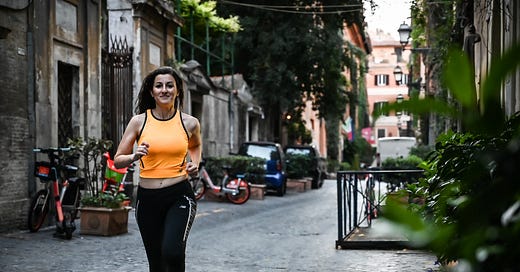



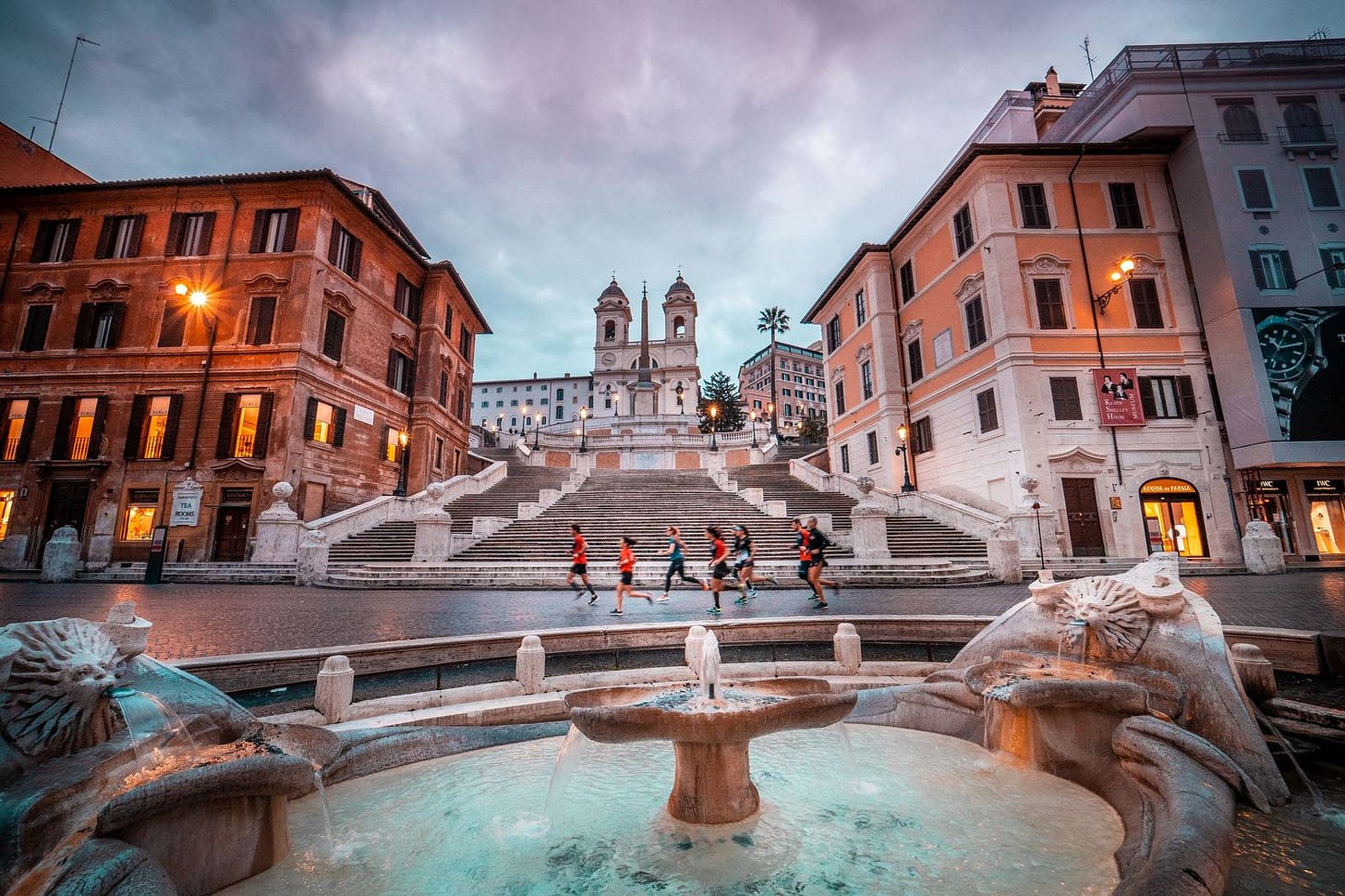
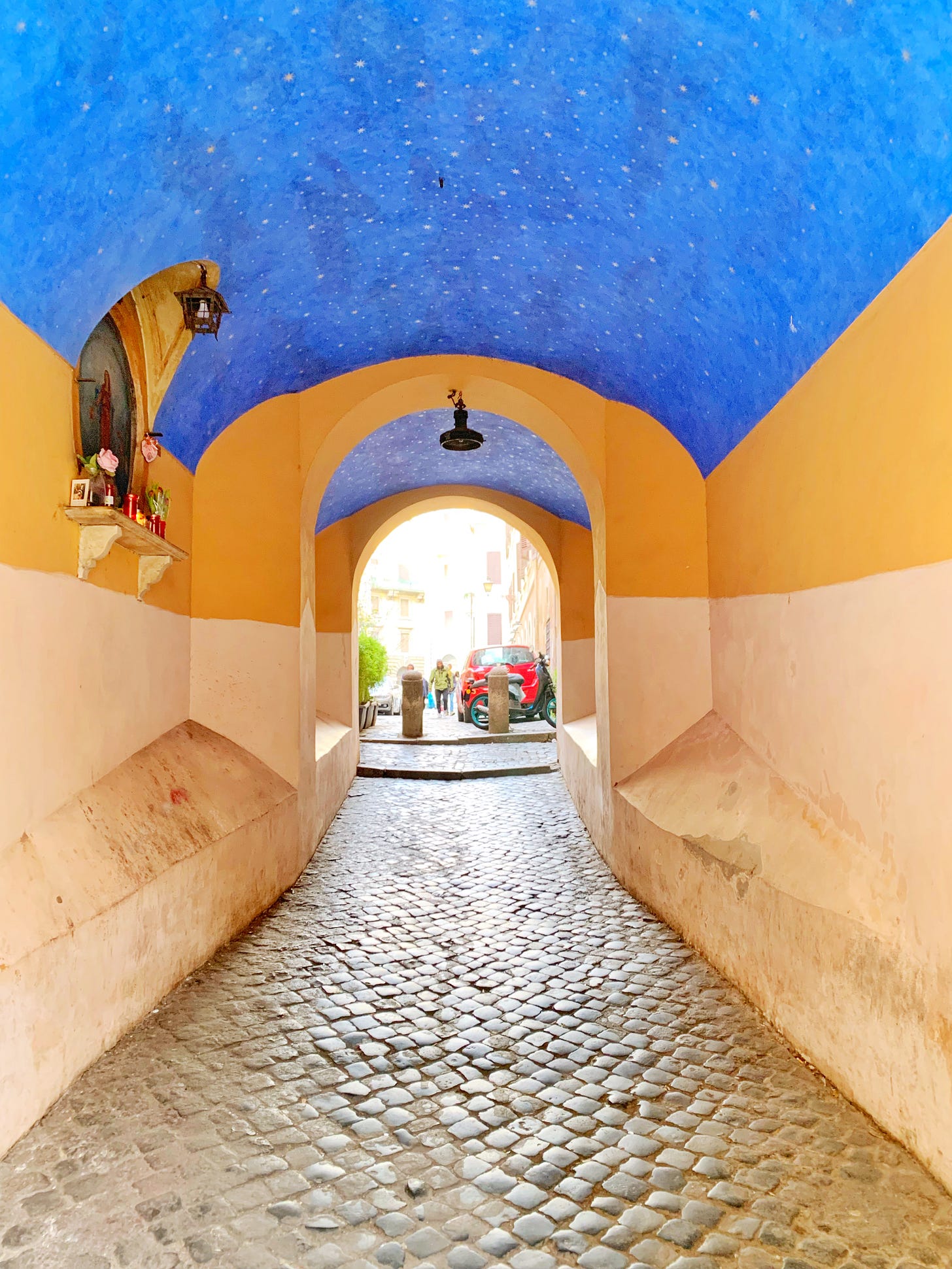
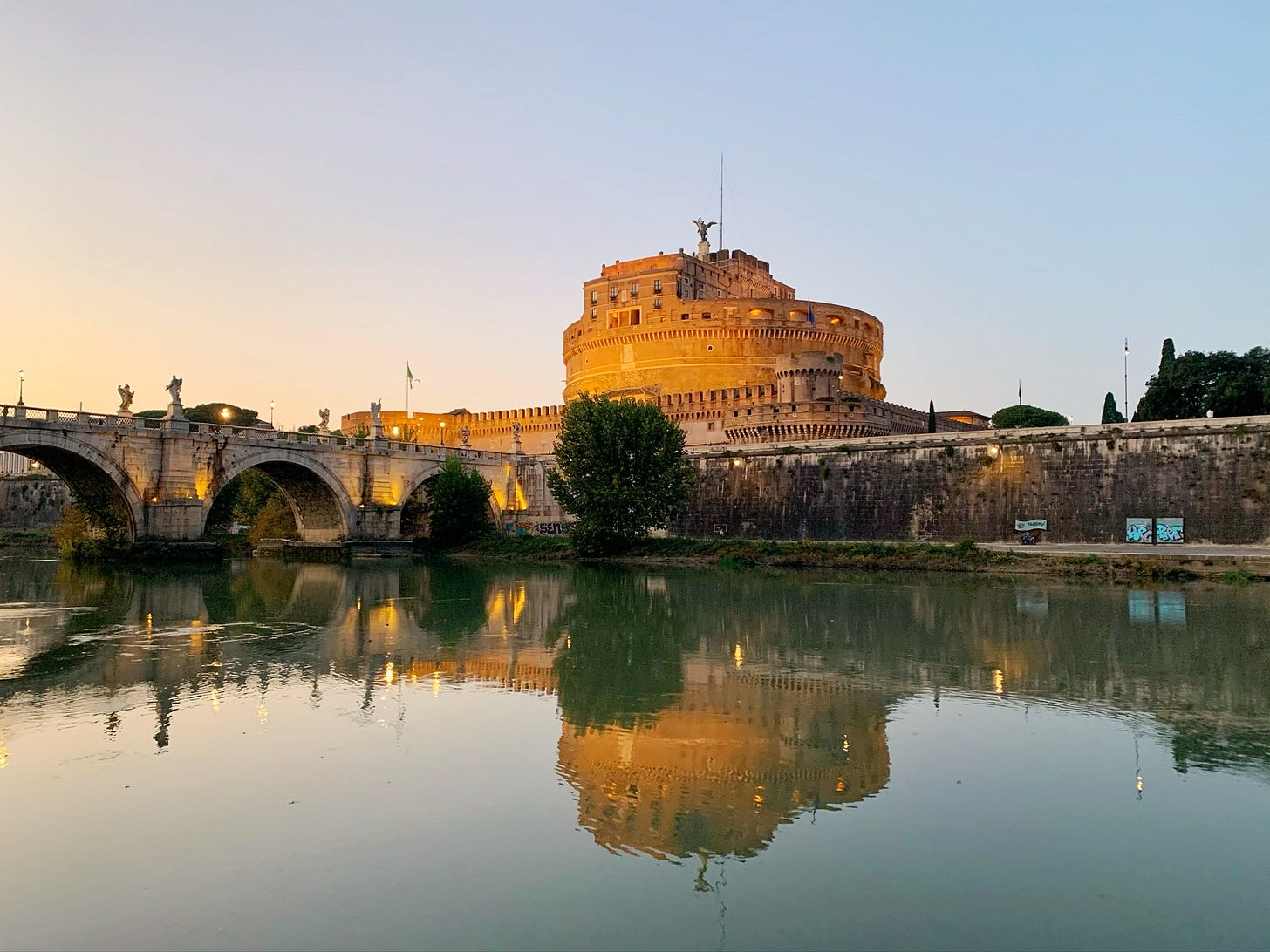
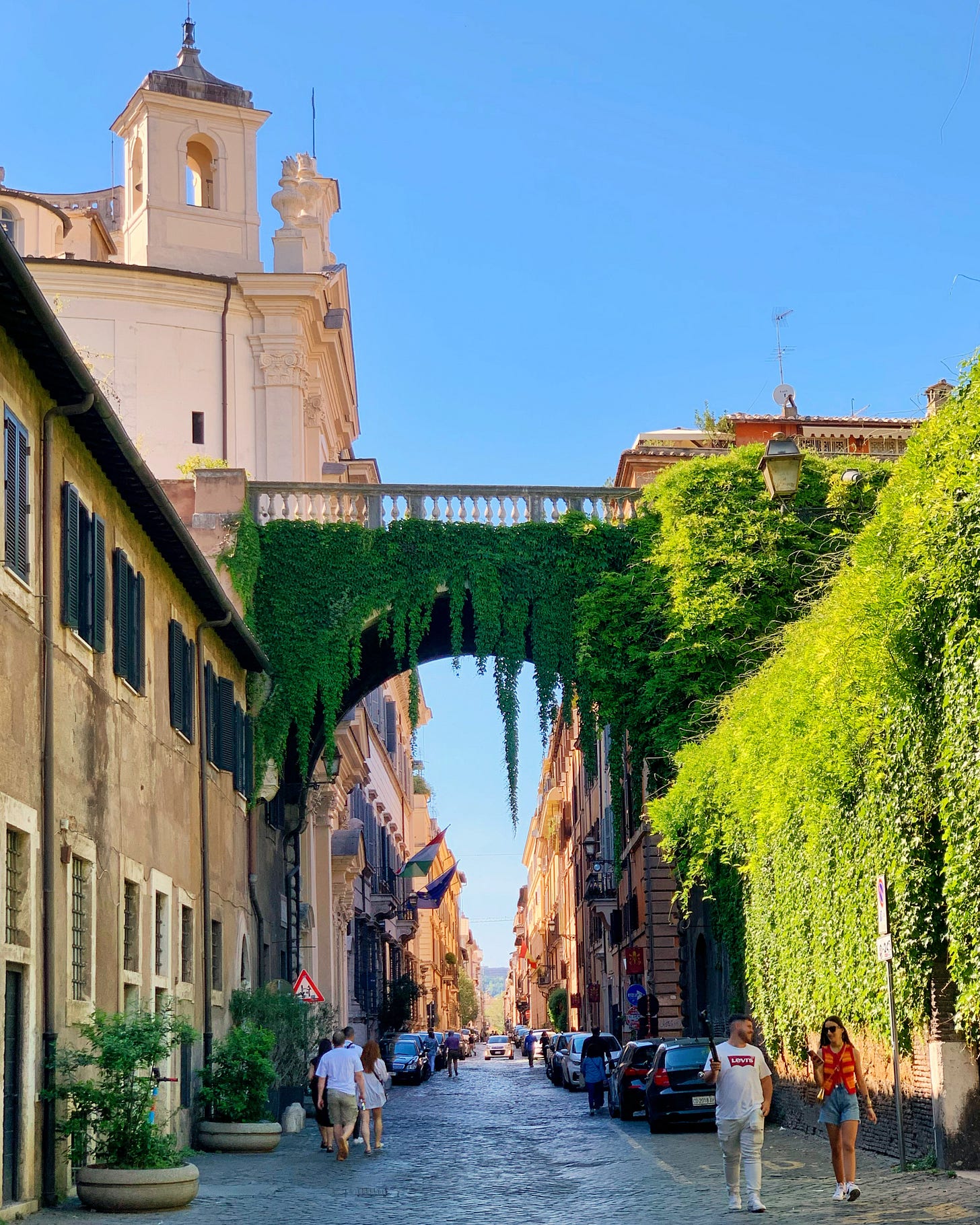
Love your title and your print type and content of course